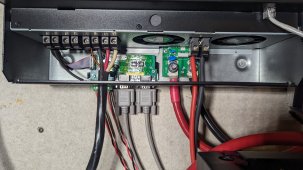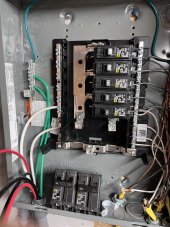If going with EG4 units, the 6500EX can be configured to do three phase output. But obviously, to do this natively would take three units, and have their associated idle draw the other 19-20 hours of the day. The EG4 6000EX can't do any kind of single phase output, so doing just one phase of a three-phase setup is out of the question with that model.
I would go with the three units, because pushing 4HP of reasonably heavy motor load for 4-5 hours straight is going to take quite lot of solar and battery to back that up. And during days of heavy clouds, it will take all of three units worth of solar charging to keep a bank of batteries alive, assuming no other load. Those two loads are probably into the 4,000+ watt range while at steady state as these motors are moving water.
On the low end, five hours is 20kWh of usage per day. if you need to consistently do this around the year, I would be over-paneling. But I don't know if you can skip some days, or if there's less usage in the winter or whatever.
Page 56 of the manual describes the setup process for the EG4 6500EX units:
If you were to use a VFD, then you might be able to sneak by with a single EG4 6500EX, as it's transformer based, and should be able to carry those loads if buffered by a VFD that has soft start programmed into the motor startup curve. A single one of my EG4 6000EX won't even come close to starting a 3HP piston compressor (even though it's got a pressure relief on shutdown). Two 6500EX units will start the compressor easily, but have a real hard time with a 5HP cyclone dust collector.
Many folks way smarter than me here that can probably put this more eloquently. I only have my limited testing to go off of.




